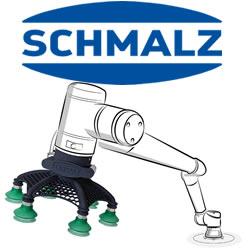Advances in farming robotics could address shortage in agricultural workers
Special Tradeshow Report for PACK EXPO Las Vegas 2015
Robotic Vision Inspection System
RoboSAM Can Assess Its Situation and Call a Human for Help When It Needs Assistance
Technology gap gives foreign firms the edge in China robot wars
OMRON to Acquire U.S. Based Adept Technology
3 Key Ways Automation Reduces Safety and Ergonomic Concerns
5 Robotics Stocks to Watch
Festo's R&D Timeline - Part 3 - 2010 & 2011
New Open Loop Current Transducers With Near Closed Loop Performance
New Automation Technician Program at George Brown College
194 Chinese Robot Companies
Humanoid robot negotiates outdoor, rough terrain with ease
Breaking down the robot-factory language barrier
Gecko-inspired technology for 'climbing' space robots
Records 1216 to 1230 of 1962
First | Previous | Next | Last
Industrial Robotics - Featured Product

